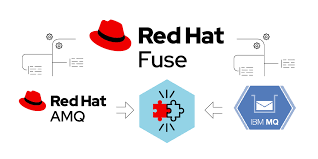In order to expose HTTPS services one needs to provide an X509 certificate signed by a certificate authority (CA). Several trusted CAs are globally available and their public keys are by default configured in browsers. Hence, when the browser talks to linkedin.com, for example, it can check whether the LinkedIn’s certificate isn’t forged by verifying its signature against the associated CA’s configured public key. This way, the browser makes sure it communicates with the right service.
The operations required to create, store and convert X509 keys and certificates are not only quite complex but also repetitive, hence this memento of how to do it.
Blog de Nicolas DUMINIL Simplex Software - Page 8
-
DEVOPS: Handling X509 certificates and related keys with OpenSSL
-
Red Hat Fuse Integration Platform 7.9.0 Docker Image

This is a Docker image which allows to run the Fuse Integration Platform 7.9.0 on top of EAP 7.4.0.
-
Spring Security OAuth got deprecated. What now ?
Okay, so you're a micro-services developer and, several years ago, you decided to adopt Spring in general, and Spring Boot/Cloud in particular, as a development platform. You're a Java fullstack developer, meaning that you're working on the back-end side, as well as on the front-end side.
In your previous projects, you have implemented back-end micro-servicves with Spring Boot and you decided to use its out-of-the-box support of the Oauth 2.0 protocol, for authorization purposes and for its RBAC (Role Based Access) features. You've found this support very usefull and practical, hence, you'd like to continue using it in your future projects.
Should this be your case, please continue reading as you might have heard that that the mentioned support got deprecated.